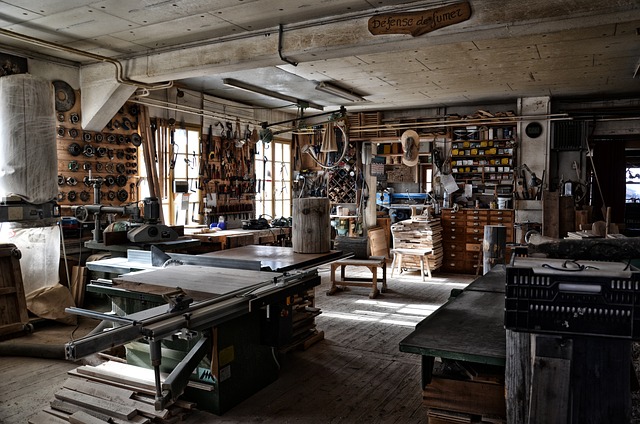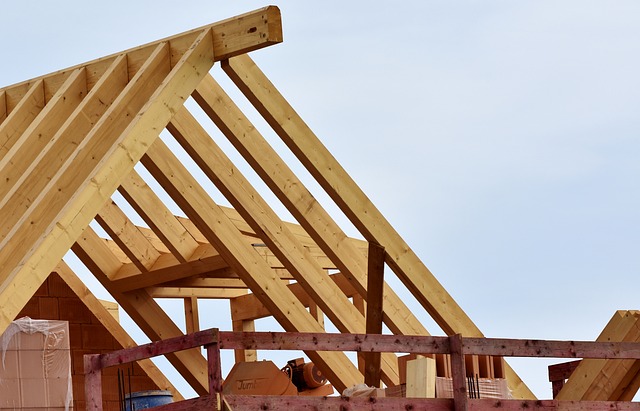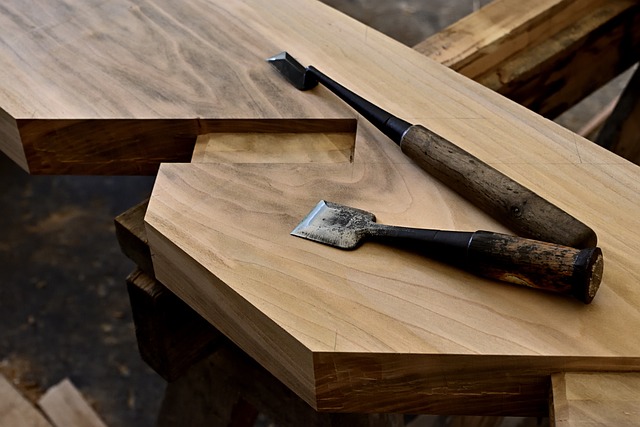Carpenters play a crucial role in effective window installation, ensuring both the aesthetic appeal and functional performance of homes. Their expertise in selecting appropriate window types—such as casement, double-hung, or awning windows—aligns with architectural styles and personal preferences while maintaining energy efficiency through precise measurements and advanced sealing techniques like weatherstripping and caulking. This process not only enhances comfort but also extends the lifespan of windows and reduces utility costs. Carpenters' proficiency in handling tools, materials, and understanding local climate conditions is essential for achieving a durable, airtight seal that protects against drafts and moisture damage. The installation process involves careful removal and preparation of spaces, ensuring new window frames are installed level and plumb to preserve wall integrity. By utilizing high-quality sealants and conducting thorough checks for air leaks, carpenters ensure superior thermal efficiency and protection against external weather conditions. Whether choosing low-maintenance vinyl frames, durable aluminum frames, or the hybrid clad-wood options, professional installation by a skilled carpenter is key to optimizing window placement for ventilation, lighting, and thermal management, significantly enhancing the overall comfort and energy efficiency of homes.
When it comes to maintaining a comfortable and energy-efficient home, the role of windows cannot be overstated. A carpenter’s expertise in installing windows with precision and ensuring they are properly sealed is paramount to achieving this goal. This article delves into the essential practices and insights needed for top-notch window installation and sealing. From selecting the right windows for your home to understanding the nuances of window frame types, we explore the art of window installation through a carpenter’s guide. We also cover the tools and materials that are indispensable for professional results, along with detailed techniques for effective weatherproof sealing to prevent drafts and moisture intrusion. With insights into best practices for flashing, precise measurements for window openings, and insulation strategies tailored to various climates, carpenters can ensure homes remain snug against the elements. Additionally, we discuss maintenance tips to maintain window performance over time, how to avoid common installation pitfalls, and the benefits of energy-efficient windows in terms of cost savings and comfort. Whether you’re a homeowner or a professional carpenter, this article will equip you with the knowledge to handle window installations and sealings confidently.
- The Art of Window Installation: A Carpenter's Guide
- Selecting the Right Windows for Your Home: A Carpenter's Perspective
- Tools and Materials Essential for Professional Window Installation
- Step-by-Step: Properly Installing Windows for Weatherproof Sealing
- Understanding Window Frame Types and Their Sealing Capabilities
The Art of Window Installation: A Carpenter's Guide

Windows play a pivotal role in both the aesthetic appeal and functional efficiency of a building. A skilled carpenter understands that the installation of windows is not merely a task but an art form requiring precision, attention to detail, and a deep familiarity with materials and tools. The process begins with meticulous measurement of the opening where the window will reside, ensuring a perfect fit that contributes to both the structure’s integrity and energy efficiency.
The carpenter’s guide to window installation emphasizes the importance of selecting the appropriate window style for the building’s design and the occupant’s needs. Whether it’s a casement, double-hung, or awning window, the carpenter must be adept at handling each type. Proper sealing is critical to maintain thermal efficiency and prevent moisture intrusion; thus, the carpenter employs various techniques, including the application of weatherstripping and caulking, to create an airtight and watertight barrier. This not only enhances comfort for the inhabitants but also extends the lifespan of the window and reduces energy costs. The carpenter’s attention to these details transforms the act of installing windows into a craft that balances functionality with beauty, ensuring homes are both inviting and well-protected.
Selecting the Right Windows for Your Home: A Carpenter's Perspective

When embarking on a project to enhance your home’s energy efficiency and aesthetic appeal, a carpenter’s expertise in selecting the right windows is invaluable. The choice of windows not only impacts the visual harmony with your home’s design but also plays a crucial role in regulating indoor temperatures and reducing utility costs. A seasoned carpenter will consider various factors, including the architectural style of your home, climate conditions, and your personal preferences. They will assess window frames for durability and resistance to weather elements, ensuring that the windows installed offer superior insulation properties. Additionally, the carpenter’s keen eye for detail ensures that each window is properly sealed, preventing drafts and maintaining the integrity of your home’s interior environment. This meticulous approach to window selection and installation contributes significantly to the overall comfort and energy efficiency of your living space.
In terms of materials and designs, a carpenter will guide you through the options that best suit your needs. Wood, vinyl, fiberglass, or composite windows each have their unique benefits and drawbacks. A knowledgeable carpenter will help you navigate these choices, considering factors such as maintenance requirements, longevity, and cost. They will also advise on the optimal window styles, whether it’s double-hung, casement, awning, or picture windows, to complement your home’s architecture while optimizing natural light and ventilation. The goal is to achieve a seamless integration of form and function that enhances your home’s character and performance for years to come.
Tools and Materials Essential for Professional Window Installation

Windows serve as both a functional and aesthetic element in any structure, ensuring thermal efficiency and enhancing the building’s overall appearance. A professional carpenter understands the importance of meticulous installation and proper sealing to maintain the integrity of the window unit and the comfort within the dwelling. To execute a top-notch window installation, a carpenter must possess a well-equipped toolkit and select materials tailored for the task at hand.
The essential tools for a carpenter embarking on window installations typically include a variety of hammers, measuring tapes, levels, pry bars, circular saws, utility knives, caulking guns, and safety equipment like goggles and gloves. These tools are indispensable for tasks ranging from the precise cutting of frames to the removal of old windows. Alongside these, materials such as weatherstripping, insulation foam, caulk, window glazing, putty, and flashing are crucial for achieving a weather-tight seal that prevents energy loss and water intrusion. The choice of materials should also consider the specific needs of the window type, the building’s location, and the climate conditions it faces. A professional carpenter’s expertise lies not only in wielding these tools proficiently but also in selecting the appropriate materials to ensure a durable, energy-efficient seal that will stand the test of time.
Step-by-Step: Properly Installing Windows for Weatherproof Sealing

When it comes to weatherproofing your home, properly installed windows are paramount to maintaining energy efficiency and protecting your interior from the elements. A skilled carpenter plays a critical role in this process, ensuring that each window is not only securely fastened but also perfectly sealed against air and moisture intrusion. The installation process begins with careful measurement of the window opening to ensure the new unit fits snugly without compromising the structural integrity of the wall. The carpenter then proceeds to remove the old window, taking note of its condition and any issues that may have led to improper sealing over time.
Once the space is prepared, the carpenter installs the new window frame with precision, making sure it’s level and plumb. This step is crucial as it determines the effectiveness of the seal. The carpenter then applies a high-quality sealant around the perimeter of the window, ensuring a tight bond between the frame and the surrounding materials. This step is critical in preventing drafts and water intrusion. The use of weatherstripping and caulking by the carpenter further enhances the performance of the window seals. These materials act as flexible barriers that fill gaps and prevent air from escaping or entering your home. Finally, the carpenter checks for any air leaks using a smoke penetrometer or a simple draft inspection method. Adjustments are made as necessary until the window is sealed in such a way that it provides optimal thermal performance and protection against weather elements.
Understanding Window Frame Types and Their Sealing Capabilities

Windows play a pivotal role in maintaining the energy efficiency, structural integrity, and aesthetic appeal of a building. When installing windows, it’s crucial to consider the type of window frame chosen, as each offers distinct sealing capabilities and suits different architectural styles and functional needs. A seasoned carpenter understands that vinyl frames are a popular choice for their durability and low maintenance; they provide effective insulation against both heat and cold while resisting the elements effectively. Wooden frames, crafted by skilled carpenters, offer a classic look and can be tailored to match the character of traditional homes. They also have superior sealing properties when properly maintained, which is essential for preventing air leaks and ensuring energy efficiency.
Alternatively, aluminum frames are favored for their strength and longevity, making them suitable for both residential and commercial applications. While they can be less thermally efficient compared to vinyl or wood, modern innovations have significantly improved their sealing capabilities. Clad-wood frames combine the best of both worlds—the natural beauty and sealing performance of wood with the low maintenance and durability of aluminum or vinyl cladding. Whatever the choice, professional installation by a knowledgeable carpenter ensures that the windows are not only correctly sealed but also positioned to maximize ventilation and lighting while minimizing heat gain or loss. This meticulous attention to detail is key to achieving optimal thermal performance and enhancing the comfort of any space.
In wrapping up our exploration of window installation, it’s clear that a carpenter’s expertise goes beyond mere physical placement of windows; it encompasses a deep understanding of materials, tools, and the artistry required for weatherproof sealing. The right selection of windows, as detailed in “Selecting the Right Windows for Your Home: A Carpenter’s Perspective,” is pivotal to energy efficiency and home comfort. The essential tools and materials outlined in “Tools and Materials Essential for Professional Window Installation” are critical for achieving precision and durability. Through the step-by-step guide in “Step-by-Step: Properly Installing Windows for Weatherproof Sealing,” readers have learned the importance of proper installation techniques to ensure longevity and effectiveness against the elements. Lastly, “Understanding Window Frame Types and Their Sealing Capabilities” highlights how different window frames influence weather resistance and overall performance. A carpenter’s attention to detail in these areas ensures that homes remain comfortable, energy-efficient, and well-sealed against the forces of nature.
